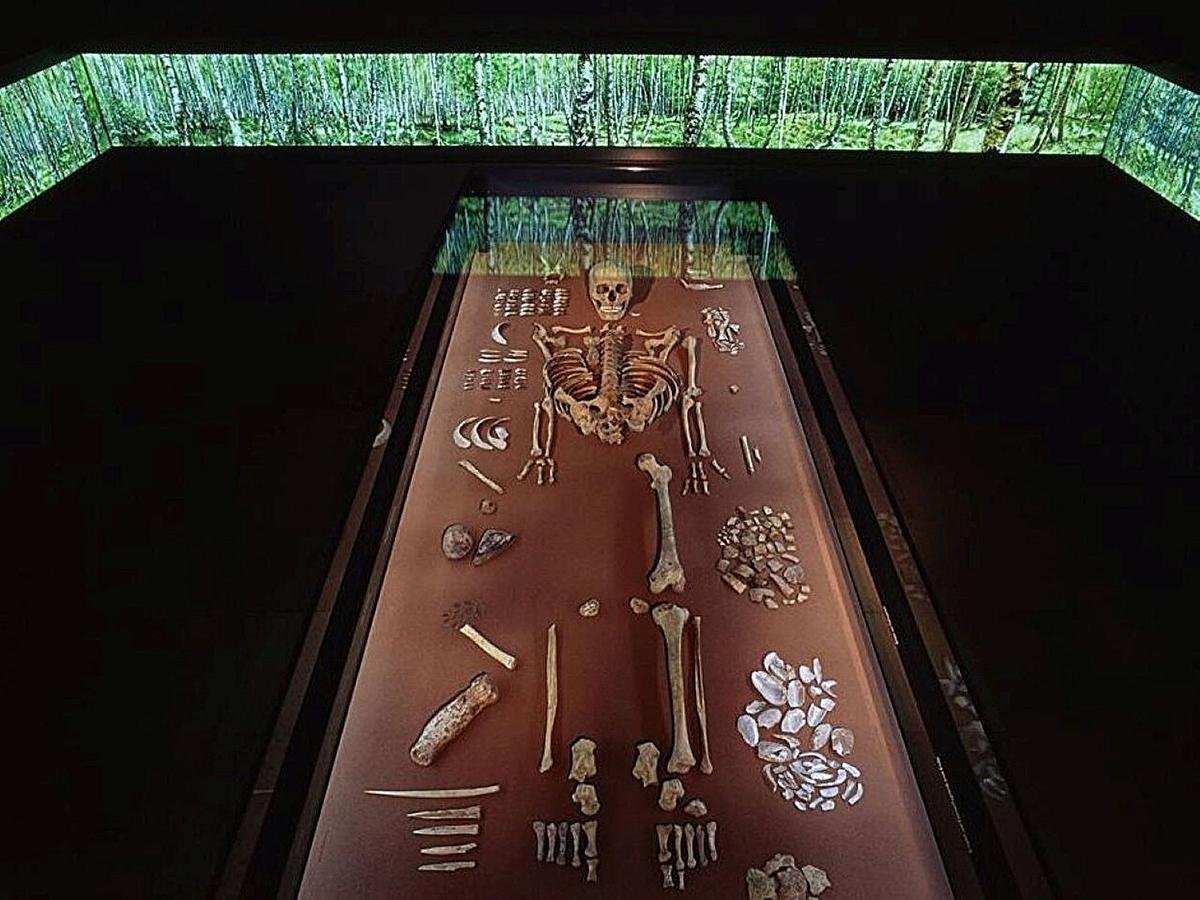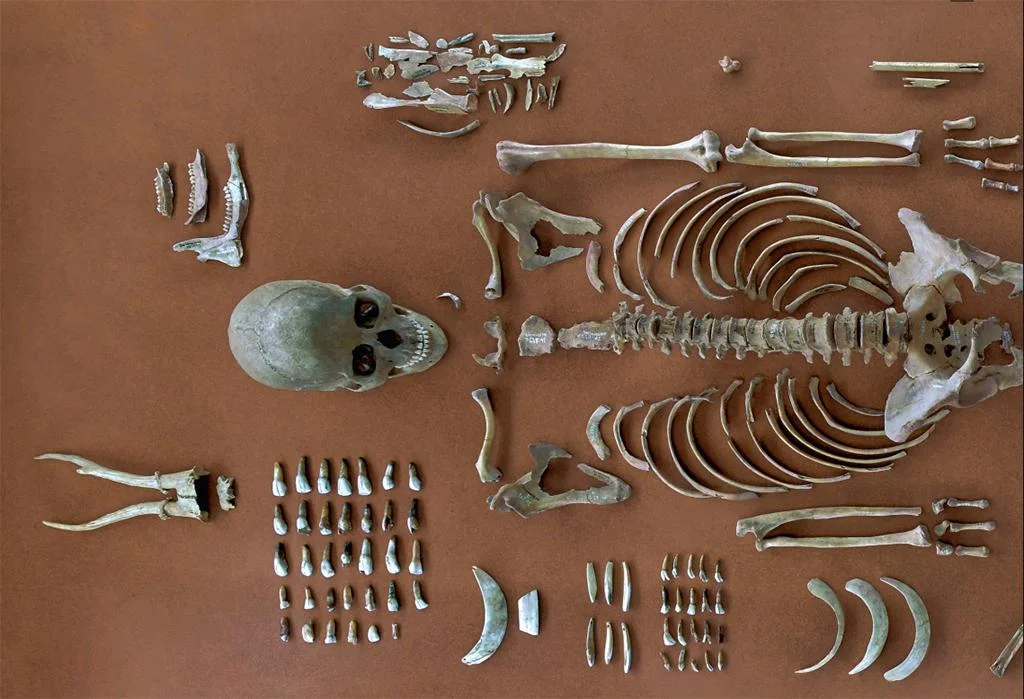In 1934, German workers discovered a remarkable double burial site in Bad Dürrenberg, eastern Germany, while constructing a spa garden. This grave, dating back to 7000-6800 BCE, contained the remains of an adult woman and an infant. The burial is now featured in an exhibit at the State Museum of Prehistory in Halle (Saale), Germany. Credit: Juraj Lipták, State Office for Heritage Management and Archaeology Saxony-Anhalt.
Recent genetic studies have upended previous beliefs and shed light on the woman’s identity, her possible role as a shaman, and her familial connections with the buried child. The woman, thought to be a shaman due to her elaborate grave goods and seated position, has undergone extensive genetic investigation. “We sequenced the complete genome of this woman who lived around 9,000 years ago,” said Wolfgang Haak, head of the Department of Archaeogenetics at the Max Planck Institute for Evolutionary Anthropology in Germany, in an interview with Live Science. The results, published in the Propylaeum conference proceedings, reveal captivating insights into her life and ancestry. Credit: Orschiedt et al., Propylaeum (2023).

The genetic analysis indicated that the woman was between 30 to 40 years old at her death and belonged to the Western European hunter-gatherer population prevalent in central and western Europe during the late Upper Paleolithic and early Holocene periods. She was approximately 5 feet, 1 inch tall, with darker hair and skin than modern Europeans, likely complemented by lighter, bluish eyes—traits typical of Western European hunter-gatherers.
Interestingly, the woman had distinct physical characteristics, including absent muscles in her lower limbs and unusual blood vessel development in her skull. Jörg Orschiedt, an archaeology professor at Free University Berlin and co-author of the study, noted that despite these peculiarities, she was not physically limited or disabled. A rare anatomical anomaly at the base of her skull may have influenced her shamanic status. Orschiedt remarked that this could lead to involuntary eye movements known as nystagmus, which might have appeared unsettling to others and potentially enhanced her role as a shaman.

In a surprising twist, the genetic research revealed unexpected details about the relationship between the woman and the infant. Haak explained, “It is possible that she was his (great-) great-great-great-grandmother across generations, and that the boy was added many decades later to his ancestor’s grave.” This finding contradicts earlier assumptions that they were a mother and son, illustrating a unique multi-generational familial bond.
The grave’s wealth of artifacts—including flint blades, mussel shells, deer bones, and wild boar tusks—provided vital context for this discovery. Haak stated, “Even though this find was made in the 1930s, new research has significantly enriched our understanding of its context, clearly linking it to the Mesolithic period and offering a more detailed view of the last European hunter-gatherer groups.”

Further excavations conducted in preparation for the 2024 State Garden Exhibition yielded additional insights into the burial. The woman’s skeleton displayed delicate features and was accompanied by numerous new discoveries, including pierced animal teeth and additional faunal and human skeletal remains.
The study, authored by Jörg Orschiedt, Wolfgang Haak, Holger Dietl, Andreas Siegl, and Harald Meller, applied advanced genetic techniques to investigate the relationship between the woman and the infant. They used a method known as identity-by-descent (IBD) tracts to confirm a fourth or fifth-degree familial connection between them, indicating they were separated by four or five generations.

